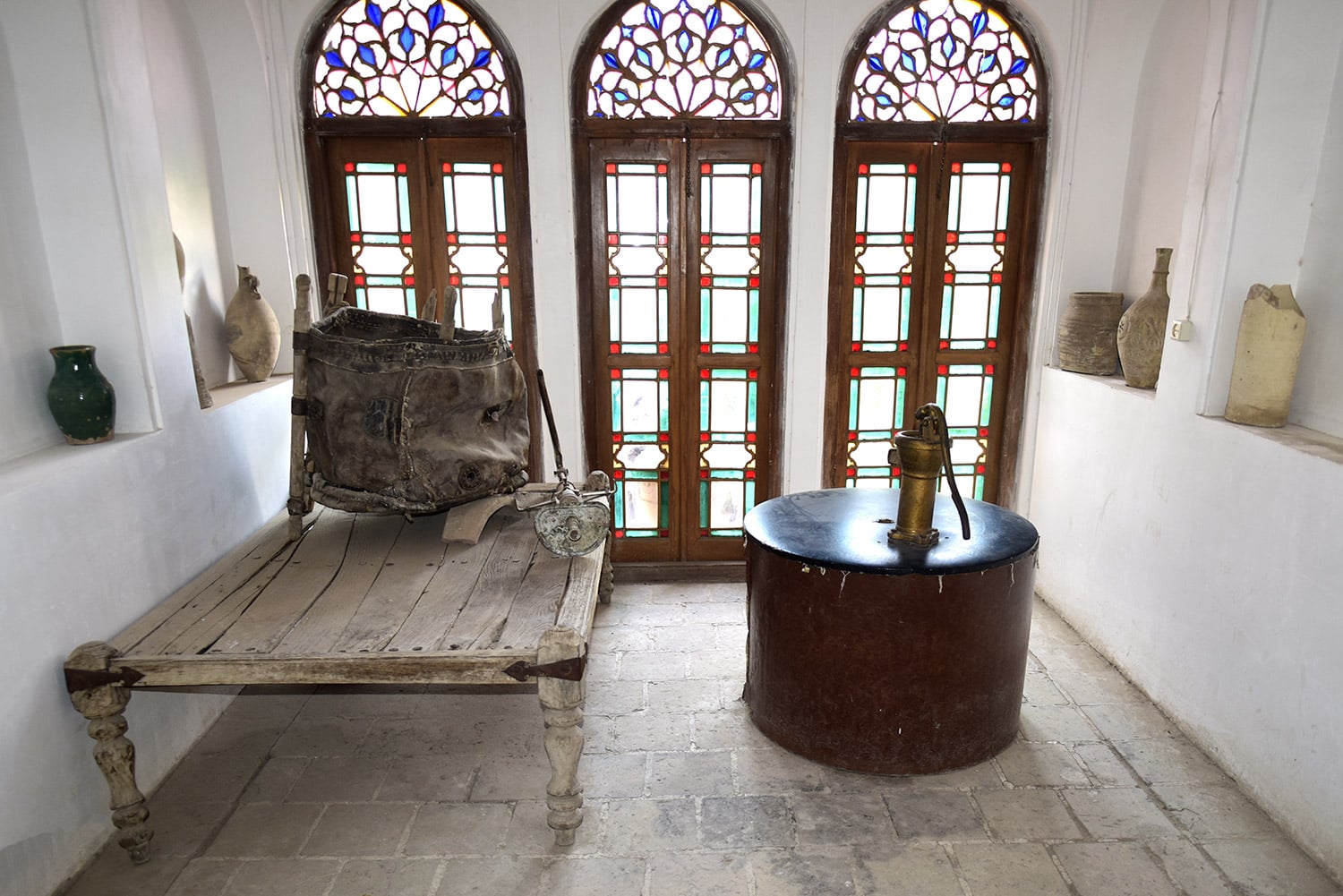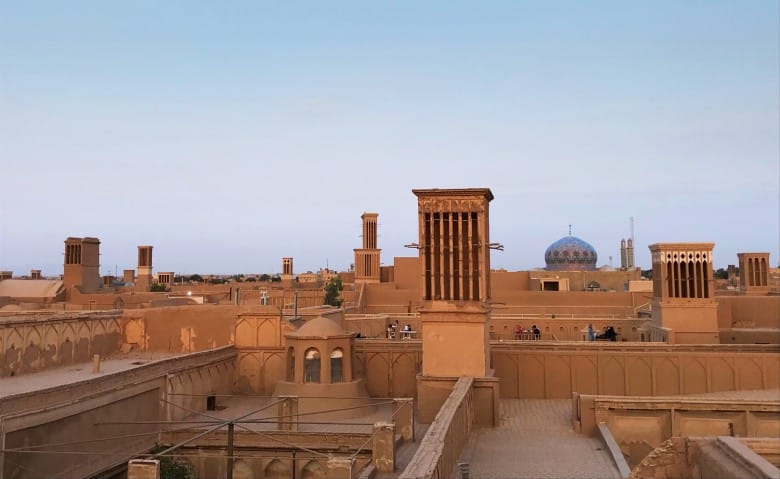Wander the Historic Alleys of Fahadan Neighborhood
A Neighborhood that Holds All of Yazd's History

Deep in the heart of Yazd, Iran, one neighborhood stands for such long and varied history and culture that seems to bleed out of every pore of this ancient city. The small alleys, sun-baked adobe structures-the unique architecture-these are what Fahadan Neighborhood is made of. It contains within the shop all that almost hypnotically tempts one to peep into the life of bygone eras, much beyond pure tourism to a tapestry of living stories, traditions, and heritage.
Contents
Historic Importance of Fahadan Neighborhood

Fahadan Neighborhood is situated in Yazd and is considered one of the oldest parts of the city with a millennial age. During the period of Safavid dynasty, it was one of the prosperous economy and development centers of the Silk Road which attracted different varieties of merchants, crafts people and travelers. Fahadan is located in Yazd, being one of the oldest quarters, millennial years old.
During Safavid rule, it was an affluent economic and cultural hub in the silk trade, attracting all shades of merchants, artisans, and travelers. The small, sometimes shaded streets curve along their course, laid out with much forethought-not for aesthetic appeal alone, but functional too: the air flow cool in the hot desert and holding the community in a tight-knit framework.
These tours through Fahadan‘s narrow cobblestone alleys allow for a great view of the historic architecture-with those unique wind catchers, actually ‘badgirs‘, with domed roofs and a network of ‘qanats‘ aqueducts which dig their ways underground, transporting water from mountains down onto the arid plains. It is this kind of ingenuity that underlines the adaptability of the inhabitants who have survived with gusto in one of the hottest parts of the world.
Walking the Alleys

Each step down each alleyway in Fahadan Neighborhood whispered to one about centuries past. There’s children playing, faraway calling from vendors, a soft ‘whoosh’ of the wind through adobe walls. Periodically, the alleys were adorned with traditional Persian tiles that somehow told stories of the artisans who had made them with so much care.
Lying amidst this network of streets is the promise of discovery: so many alleys bring in the unexpected moment-a hidden courtyard, a family teahouse, or a handicraft shop from the locals. The visual feast of colors and designs impregnates the spirit of the community into everything-from earthy browns to bright blues and greens.
Special Landmarks to Visit in Fahadan
Without visiting the following most important places, this would not be a complete tour of Fahadan:
1. Yazd Water Museum

The building of Yazd water museum itself is a traditional house, and in it, one can find amazingly displayed the genius of indigenous water management systems. Most of the artifacts regarding the history of Yazd water are kept in this museum, through which visitors are allowed to draw upon information on the lives dependent upon this resource.
2. Jameh Mosque of Yazd

One of the big mosques in Iran, with great tilework and nice minarets. Guests are invited into the quiet courtyard of the mosque, where they can sit for a moment and take a closer look at the details of Islamic architecture. The construction of the Yazd jameh mosque dates back to the 12th century, and hence will be just right for starting those who want to get deep inside the spiritual heritage of the neighborhood.
3. Dowlat Abad Garden

Another treasure in Fahadan Neighborhood, this is included in the UNESCO World Heritage list. The garden will be a treat for the botanically inclined, quite interestingly architectural. This 18th-century construction is a great example of how the Persians designed their gardens-just replete with reflection pools and colorfully alive vegetation. This windcatcher is said to be the highest in Iran and an interesting sample of how the ancients used to control the climate.
4. Shah Nematollah Vali Shrine

This shrine belongs to one of the venerated Sufi saints and the shrine is richly ornamented with tiles. The mood here is peaceful and hence, encourages subtle thoughts. Pilgrims, however, as normal tourists, visit this place of spirituality and tranquility and are beset with comfort.
Fahadan’s Cultural Fabric

The magic of Fahadan Neighborhood is in its living culture: it is the potters, weavers, carpet makers, and metal workers who still keep the courts alive in the neighbourhood. Workshops where these skills are still practised allow the traveller to assess the skill and dedication in each piece. Many of them are keen to relate their stories as hands guide the visitor deftly through the processes passed down from generation to generation.
Giving place to another aspect of the richness of culture in Fahadan, small eateries were serving local food. Traditional dumplings (Mantu) and stews (Khoresh)-mainly served with aromatic saffron rice-are the dishes one should not miss the taste of. Here, a glass of tea in a traditional teahouse and sweet saffron pastries would make them witness an unforgettable sensory experience that would lead them to the nation of Iran’s heritage.
What really sets Fahadan apart from any other historic neighborhood is the friendliness of its people and that they are very open towards showing others their culture. People in Yazd are generally friendly and open with respect to showing others their culture. Quite often, tourists find themselves being invited into homes where families pour them tea and share laughs-a much more interactive cultural exchange that will be etched in their memories forever.
Preservation Efforts

Fahadan Neighborhood has striven to retain much of its historic nature despite modern developments and the many tests rapid urbanization brings about. Recent restorations tried to keep the architectural integrity of the neighborhood together with sustainable tourism development in respect of the cultural heritage. It is in bringing an environment unique in juxtaposed ancient structures with rhythms of modern-day life where history and modernity complement each other in harmony.
Conclusion
It is not mere exploring of ancient brick and mortar when one walks historic alleys in the Fahadan Neighborhood; it is peering into the many layers of history, culture, and humanness. Every step is a revelation of silent whispers of the past while continuing to echo to this date with the spirit that has kept this community together.
Fahadan has remained in this time capsule, breathing in the pulse of life at every beat-an invitation to the voyager to plunge into its richness. From history buffs and aficionados of architecture to the merely curious traveler, one and all are welcomed by Fahadan into its alleys to get lost and find something new around every corner in its intriguing story-which is ongoing and awaits your presence.
FAQ
What is Fahadan known for?
History, architecture and cultural heritage are the outstanding features of this area in the picture, on which antiquated narrow lanes and clay built homes in Yazd, Iran can be seen.
What are the most interesting places to visit in Fahadan?
Among the important landmarks are Yazd Water Museum, Jame Mosque of Yazd, Dowlat Abad Garden, and Shah Nematollah Vali Shrine which offer the culture and history of the given area.
How will the community in Fahadan interact with the guests?
The kind people of Fahadan many times welcome visitors to their homes, offering the guests to drink tea and have fun together which enables an active cultural exchange and hospitable environment.








